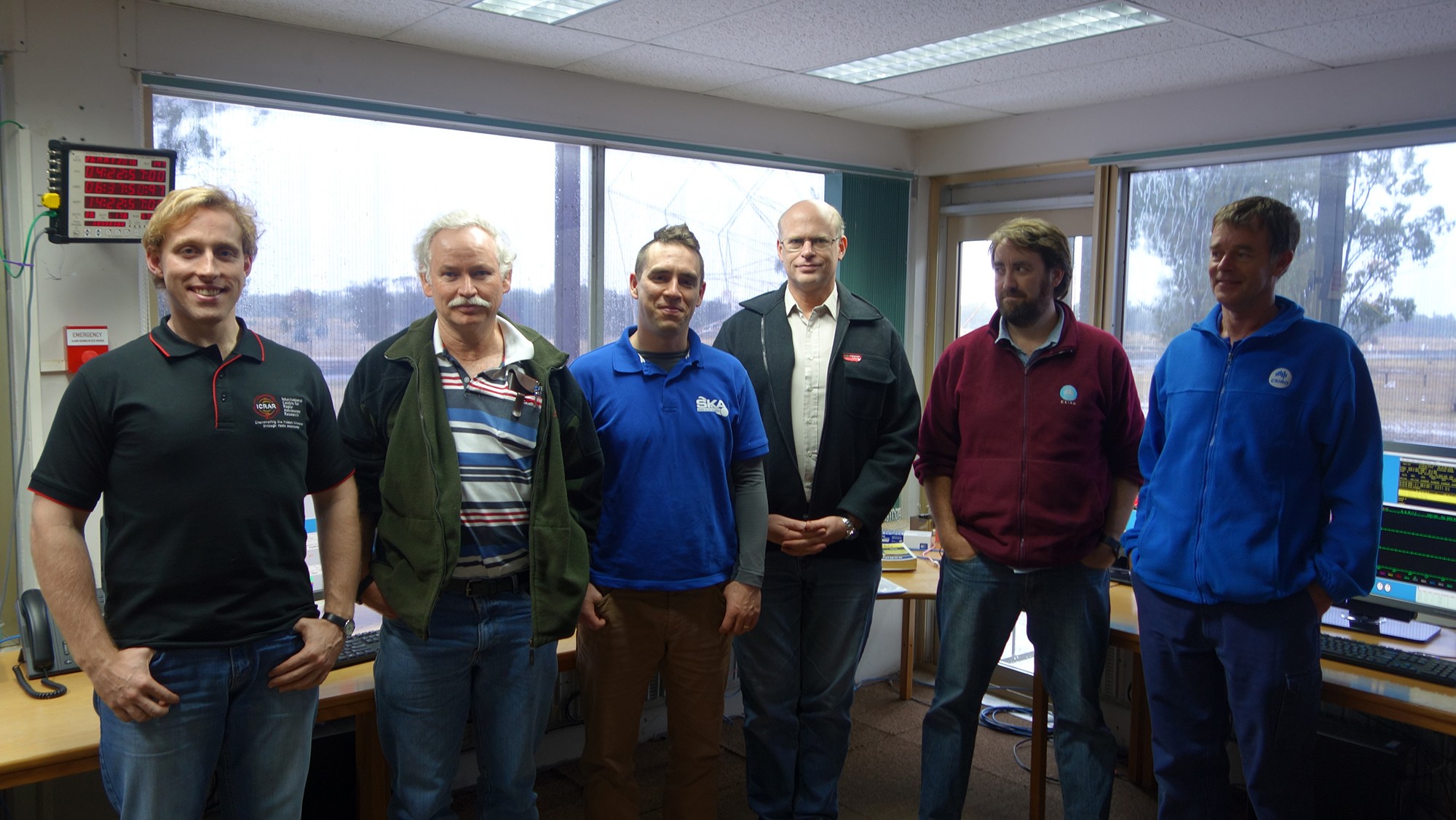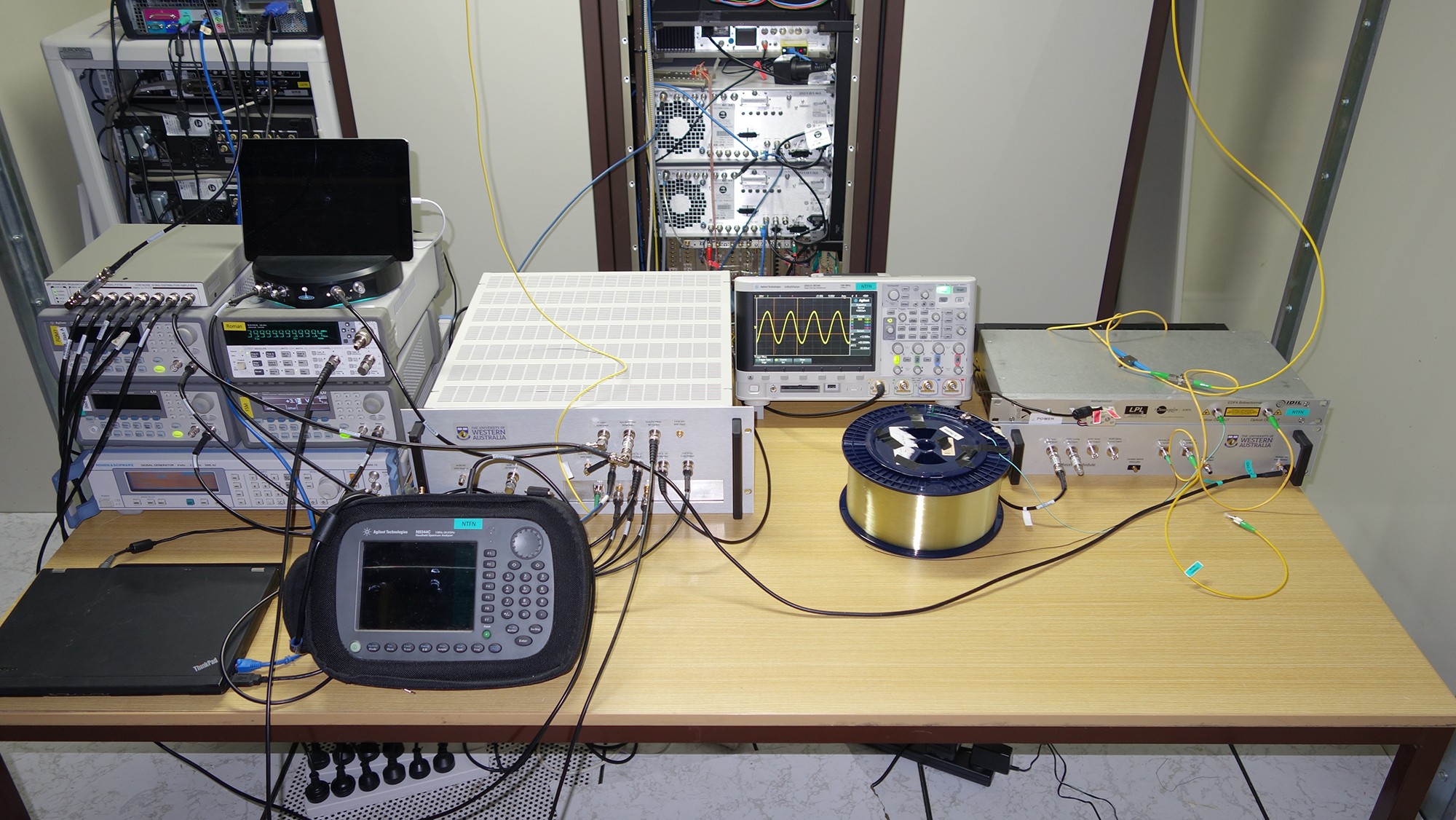Australian researchers develop ultra-accurate SKA synchronisation tech
01 July 2016
Australian researchers have successfully completed ‘Astronomical Verification’ of a critical sub-system of the Square Kilometre Array (SKA) — a system that allows the telescope to collect extremely sensitive data even though its individual antennas are separated by hundreds of kilometres.
Built in partnership with the SKA’s Signal and Data Transport consortium, this technology is a prototype of the SKA telescope’s ‘frequency synchronisation system’, and was found to perform between 10 and 100 times better than the requirement for the SKA.
According to lead designer Dr Sascha Schediwy from ICRAR-UWA, an active frequency synchronisation system is necessary for the SKA to function.
“The SKA telescope is designed to be synchronised using ultra-stable frequency signals that are transmitted on optical fibre from a centrally-located atomic clock, to each of the telescope’s hundreds of individual antennas,” said Dr Schediwy, “As mechanical stresses and thermal changes acting on the fibre degrade the stability of the transmitted signals, an active frequency synchronisation system ensure the SKA can maintain coherence across the array.”
UWA’s prototype SKA frequency synchronisation system continuously measures the changes in the fibre link and applies a correction in real-time, reducing fluctuations to no more than one part in ten trillion over a 1-second period.
“A clock relying on a signal of that stability would only gain or lose a second after three million years—such extremely precise synchronisation is necessary for radio telescope arrays like the SKA to function,” said Dr Schediwy.
Australian SKA Project Director, Mr David Luchetti, said the extreme accuracy of this technology could have all sorts of applications beyond discovering stars and galaxies from the early Universe.
“Astronomy is constantly pushing the boundaries in fields like precision timing, imaging and big data management, leading to new technologies like GPS location systems and more advanced medical imaging,” said Mr Luchetti, “At the time of invention, we often don’t fully appreciate the extent to which these technologies can change lives and boost the economy.”
Researchers from the International Centre for Radio Astronomy Research, The University of Western Australia School of Physics and CSIRO Astronomy and Space Science tested their prototype equipment at CSIRO's Australia Telescope Compact Array (ATCA) site in Narrabri, NSW over a two-week period.
Dr Schediwy said CSIRO’s Compact Array is the ideal astronomical facility to conduct SKA astronomical verification trials.
“Each of its six antennas is equipped with two independent but identical receivers. The team could therefore connect UWA’s SKA synchronisation system to one set of receivers, while the other set remained unaltered.”
“This success comes at an excellent time for the SKA project and our design, as the final decision on technology for the frequency stabilisation system will be made in the coming months.”
The full media release is available at the ICRAR website.
Back to Latest ASKAP News page.



